Hip Waders vs Chest Waders for Fishing: Six Key Differences
A perfect wader can enhance your fishing experience as an avid fisherman. There are two popular types of waders, hip and chest waders. These two types of clothing have been the subject of much debate among anglers, each with advantages and disadvantages.
But here’s the truth: hip and chest waders are not created equal.
Hip waders, as the name suggests, cover only up to your hips, offering a lightweight and more maneuverable option. Conversely, chest waders provide full coverage up to your chest, ensuring maximum protection and versatility.
Also, hip waders are more suitable for shallower waters and milder terrains but chest waders are better suited for deeper waters and rougher terrains.
Today, we will discuss the differences between hip and chest waders, exploring what to look for when buying hip waders for fishing. So, let’s explore these waders in detail.
Differences Between Hip Waders and Chest Waders

While both types of waders serve the same basic purpose, they differ significantly. But chest waders offer more coverage as they extend up to the chest.
- Coverage and protection
- Breathability and ventilation
- Comfort and warmth
- Water depth & speed suitability
- Ease of removal
- Fishing type suitability
Now let’s look at these differences in detail:
Coverage and Protection
Hip waders only provide coverage up to the top of the inner legs, while chest waders come up to the area just under the armpits. With chest waders, you’ll feel invincible, fully protected from chest to toe in any fishing environment.
These waders provide the ultimate coverage and protection, ideal for anglers venturing into waist-deep waters or cold environments.
Breathability and Ventilation
Chest waders with breathable materials allow air to flow through the material, making it easier for anglers to stay ventilated while on the water.
But wait, there’s more. If fishing in sweltering heat isn’t your thing, consider hip waders. Hip waders are shorter than chest waders, covering the legs from the feet to the hips.
They’re much more comfortable in warmer weather than chest waders, as they allow more airflow around your body. Hip waders are perfect for those who want to keep cool while they fish.
Comfort and Warmth
Chest waders are praised for the sense of security they provide. They keep your body dry and offer better support than hip waders. Additionally, chest waders are more versatile than hip waders. They can be used in more situations, like deep water, fast-moving water, and easy walking areas.
If you’re looking for better warmth, neoprene hip waders, and chest waders are great options! Neoprene hip waders provide better insulation and durability, while neoprene chest waders offer better insulation and warmth.
Water Depth & Speed Suitability
Hip waders are great for fishing in shallow waters with slow currents. These clothing will suffice if you’re fishing in a river or stream where you won’t be wading too deep. They’re also excellent for those who prefer mobility and freedom of movement.
Looking to wade in deeper waters? Chest waders are your go-to! They protect your whole body from water entering your waders, making it easier to wade in deeper water.
Chest waders are perfect for deep water, fast-flowing water, and easy walking. They provide excellent protection, keeping you dry and comfortable all day long.
Ease of Removal
Slipping out of hip waders is a breeze, making it easier to maneuver in swift currents. Unlike chest waders that extend up to the chest, hip waders end at the top of the inner legs, allowing for quick and effortless removal.
This is particularly advantageous when navigating through fast-moving water, as it reduces the risk of getting tangled or caught in the waders. The ease of removal also comes in handy when needing to respond to an emergency situation quickly or when time is of the essence.
To better understand the differences between hip waders and chest waders in terms of ease of removal, refer to the table below:
| Hip Waders | Chest Waders | |
| Ease of Removal | Easier | More Difficult |
| Water Depth Suitability | Shallow to Moderate Depths | Deep Depths |
| Water Speed Suitability | Calm to Moderate Currents | Fast Currents |
Fishing Type Suitability
Hip waders are ideal for shallow waters with slow currents, making them suitable for fishing, farming, and agriculture.
Meanwhile, chest waders are recommended for those who anticipate walking around much in higher water levels or fishing in waist-deep waters or cold environments. The added coverage and insulation chest waders provide make them more versatile in these conditions.
What to Consider When Choosing Hip Waders for Fishing?

When choosing hip waders for fishing, you’ll want to ensure they’re the right size, properly belted for your safety, and provide enough traction for wading through algae or moss-covered waters.
To help you make an informed decision, here are some key considerations:
- Sizing: Ensure that the hip waders fit you properly, as ill-fitting waders can be uncomfortable and restrict your movement.
- Belted for Safety: Opt for hip waders with a secure belt system to prevent them from slipping down or filling with water, which could be dangerous.
- Traction: Look for waders with a footed design and sufficient traction, especially if fishing in waters with algae or moss. This will minimize the risk of slipping and falling.
Do I need to wear shoes inside hip waders?
Wear appropriate footwear inside hip waders, as the soft sock-like booties attached to the wader leg do not provide sufficient protection or support on their own.
The attached neoprene sock is designed to keep your feet warm and provide a snug fit, but it is not meant to withstand the rugged terrain or potential hazards you may encounter while fishing. By wearing proper shoes or boots inside the hip waders, you can ensure better traction, stability, and protection for your feet.
Consider choosing waterproof, durable footwear with a good grip to prevent slipping on wet surfaces. Also, opt for shoes or boots that support the ankle to reduce the risk of twisting or spraining your ankle.
Remember, the right footwear inside your hip waders can greatly enhance your fishing experience by keeping you comfortable and safe.
Do I need to wear pants under hip waders?
To fully enjoy your fishing experience, wear pants underneath your hip waders for added comfort and protection. While hip waders are designed to keep the wader material off your legs, wearing pants underneath provides an extra layer of insulation and prevents any potential chafing or irritation.
Here are a few reasons why wearing pants under hip waders is a good idea:
- Protection: Pants are a barrier between your skin and the wader material, protecting you from rough or abrasive surfaces.
- Comfort: Wearing soft pants underneath hip waders can help regulate body temperature, keeping you cool in hot weather and providing extra warmth in colder conditions.
- Moisture Control: Pants can help absorb sweat and moisture, preventing discomfort or clamminess during your fishing adventure.
Can a snake bite through hip waders?
Ensure your safety in the water by remembering that snakes can easily penetrate the material of your hip waders, putting you at risk of a snake bite. Hip waders are designed to keep your feet and legs dry but are not snake-proof. The primary purpose of hip waders is to protect against water, not snake bites.
Snakes can swim well and are known to live near water sources. Therefore, relying solely on rubber hip waders to protect you from snake bites isn’t recommended. It’s crucial to understand that the material of hip waders isn’t thick enough to withstand the force of a snake’s bite.
Are hip waders good for fly fishing?

Fly fishing with hip waders is like dancing on water, allowing for greater mobility and comfort in shallow rivers. These waders are an excellent choice for fly-fishing enthusiasts due to their simplicity and comfort.
Here are five reasons why hip waders are good for fly fishing:
- Enhanced mobility: Hip waders provide unrestricted movement, allowing you to navigate through shallow waters effortlessly.
- Comfortable fit: The design of hip waders ensures a snug fit around the waist, providing all-day comfort during your fishing trips.
- Easy to put on and take off: Unlike chest waders, hip waders are quick and easy to slip on and off, saving you time and effort.
- Breathability: Hip waders are made from breathable materials, preventing excessive sweating and discomfort.
- Versatility: With hip waders, you can fish in various shallow water conditions, making them a versatile choice for fly fishing.
What are chest waders used for?
When you’re ready to take your fishing to the next level, slip into a pair of chest waders and confidently conquer the deep waters.
Chest waders are incredibly versatile and are specifically designed to keep you dry and comfortable in even the highest river levels. These one-piece garments, equipped with built-in suspenders, allow anglers to fish in water levels as high as their chest.
Fishermen across the US, especially in Pennsylvania and Alaska, commonly use chest waders for various reasons. They protect against water, keeping you dry and warm even in challenging fishing conditions. Also, chest waders offer greater coverage and protection than other wader options like hip waders.
With chest waders, you can wade deeper into the water, allowing you to reach remote fishing spots and access areas that would otherwise be inaccessible. They are particularly useful for fishing in rivers, streams, and other bodies of water with high water levels.
To further illustrate the benefits of chest waders, here is a table comparing chest waders and hip waders:
| Chest Waders | Hip Waders |
| Cover the entire body up to the chest | Only cover the lower body up to the hips |
| Provide better protection against deep water | Offer limited coverage and protection |
| Allow for deeper wading in high water levels | Suitable for shallow-water fishing |
| More versatile and suitable for various fishing environments | Less versatile and limited in application |
| Offer more storage options with built-in pockets | Limited storage options |
How often do I need to wash my chest waders?
To maintain optimal performance, it’s important to give your chest waders a thorough wash twice a year. Cleaning your waders helps them perform at their best and prolongs their lifespan.
Here are some reasons why regular washing is essential:
- Prevents buildup of dirt and debris: Over time, dirt, mud, and other debris can accumulate on your waders, affecting their breathability and waterproofing capabilities. Washing them removes these contaminants, ensuring your waders continue providing the necessary protection.
- Reduces the risk of damage: Washing your chest waders helps identify any wear and tear, such as leaks or weak spots. By addressing these issues promptly, you can prevent further damage and avoid unexpected mishaps while fishing.
Hip or Chest Waders: Choose the Proper Waders for Your Adventure
When choosing between hip waders and chest waders, it ultimately depends on your specific needs and preferences. Hip waders are great for shallow waters and provide more mobility, while chest waders offer better protection and are ideal for deeper waters.
Remember to wear shoes inside your hip waders for added comfort and support, and consider wearing pants underneath for extra insulation. As for chest waders, they’re commonly used for activities like fishing, hunting, and working in wet environments.
So, whether knee-deep in a river or waist-deep in a lake, choose the waders that suit your needs and prepare for a great outdoor adventure. Like a well-crafted fishing lure, the right pair of waders will be your reliable companion, helping you navigate the waters easily and in style.

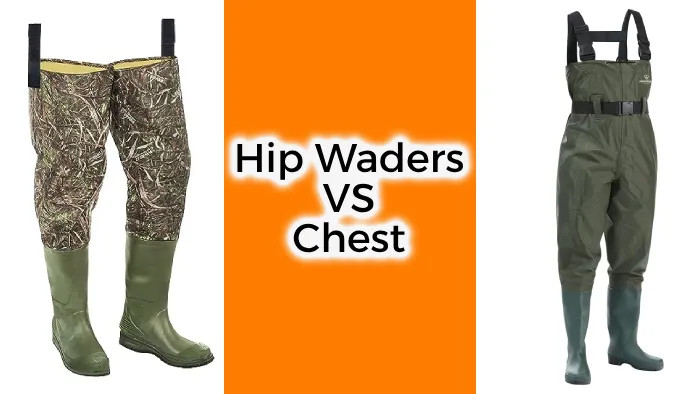
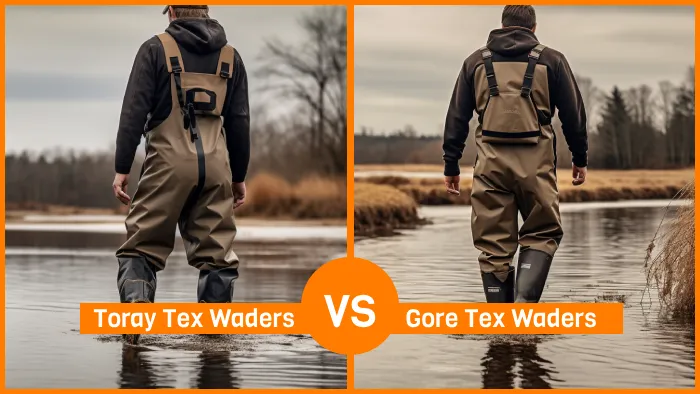
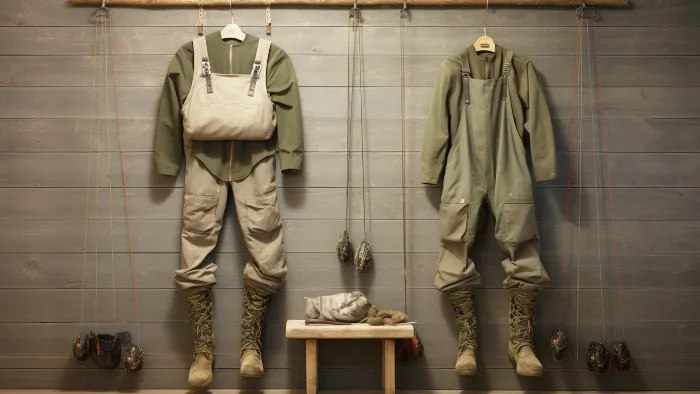
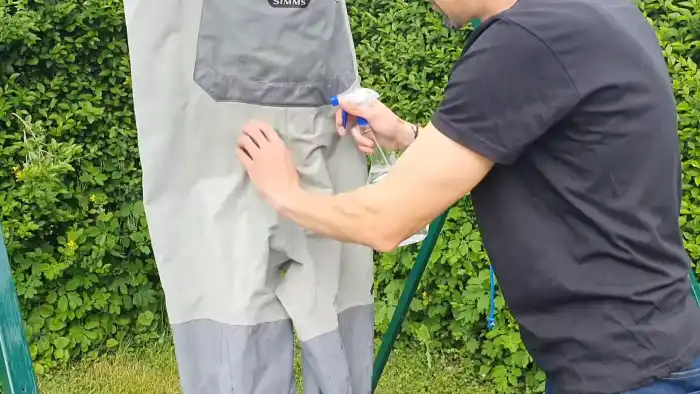
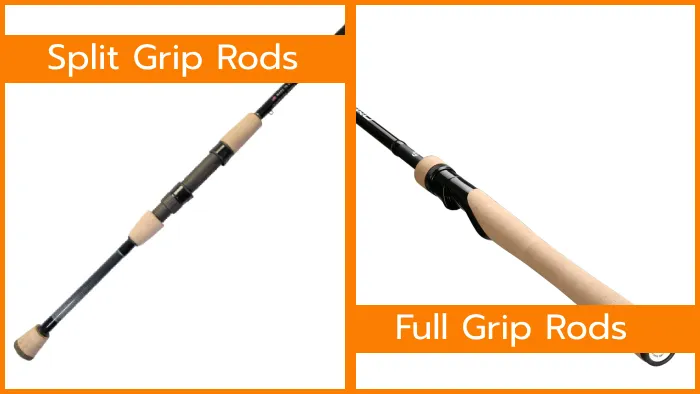
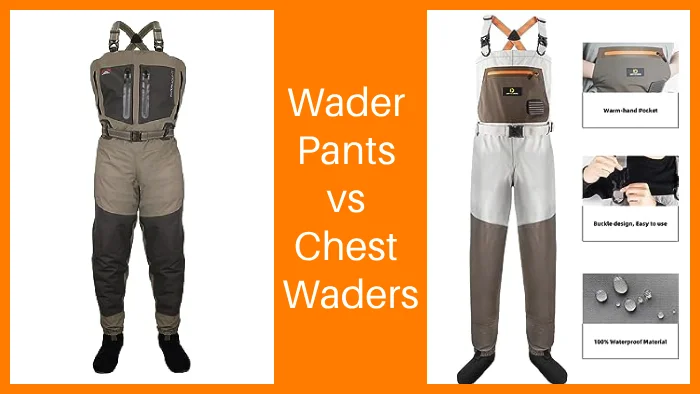
![How to Make Your Own Fishing Waders: 10 Steps [DIY]](https://www.cnybia.com/wp-content/uploads/2023/07/how-to-make-your-own-fishing-waders1-768x432.webp)